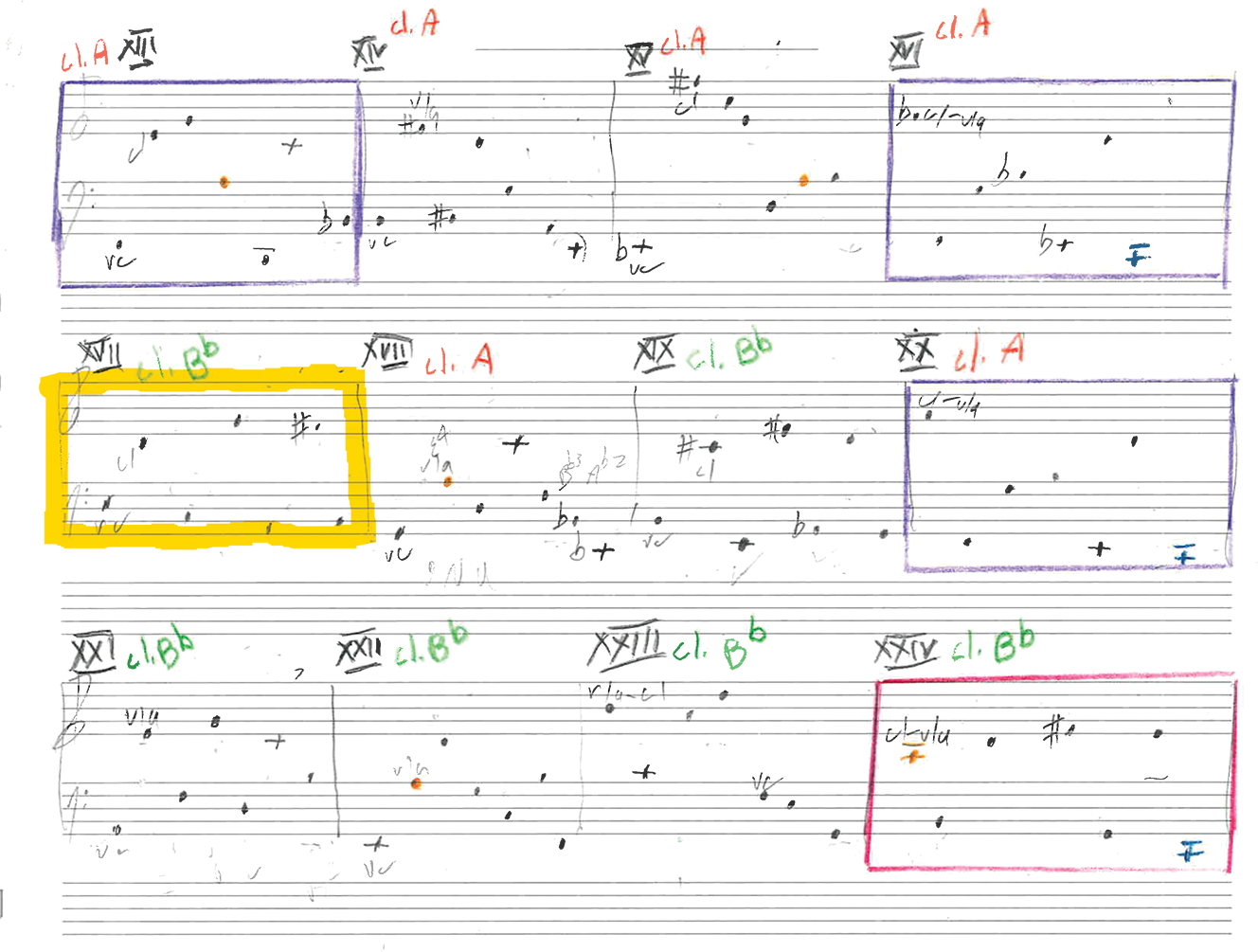Music For A Closed Space
Music for a Closed Space is an instrumental cycle written for clarinet, viola, and cello. Divided into twenty-four 2’30” groups, each piece consists of 7 fixed pitches set contrapuntally over 53 measures with a total duration of approximately 1 hour. Whether in live performance, recording, or score analysis, the cycle is intended to be heard or examined as a continuous, uninterrupted experience.
Music For A Closed Space
Emily Bowland - Clarinet
Elizabeth Lamb - Viola
Paul Christopher - Cello
The piece is organized in three layers: form, pitch, and instrumentation.
Form: The overriding structure of Music for a Closed Space unfolds as a series of schematic imprints; a design whereby a composition’s formal structure is repeated or imprinted in successive pieces. Group I is divided into three sections of 15, 23, and 15 measures respectively. Measures 1 through 15 introduce the first three fixed pitches and establish the opening structural scheme. The next three pitches appear in the central and longest section of the piece with the opening structural scheme developed and varied. The final 15 measures begin with the entrance of the seventh and final fixed pitch and contain the densest counterpoint of the piece. The final four measures close with the same two fixed pitches which opens the piece. The structure of Group I is then imprinted and repeated in Groups II – XXIV, each comprised of 7 discrete fixed pitch sets in the same duration.
Pitch: The pitch content of Music for a Closed Space is organized by a set of correlated intervallic relationships dividing the piece into two equal halves. The twelve fixed pitch groups in each half are arranged into three blocks of four, whereby the fourth group in each block functions as a recurring endpoint within the cycle. Throughout Music for a Closed Space one pitch functions as the unifying focal point. In the first half, the note A3 opens Groups IV, VIII, and XII, and appears in four other groups at structurally significant junctures. In the second half, A3 appears in the opening and close in Groups XIII and XXIV, and also occurs in three additional groups at structurally convergent areas.
Instrumentation: Against the backdrop of cello and viola, the aperiodic alternation between clarinets in A and B-flat adds a subtle but importation parameter in the work’s organization. Although the two clarinets are used equally throughout the cycle, appearing in twelve groups each, the instruments’ irregular alternation allows each half of the cycle to maintain a distinct resonant autonomy. A single clarinet is used continuously in only 3 of the 6 four-group blocks. The clarinet in B-flat is used in the central block of the first half, (Groups V – VIII), and final block of the second half (Groups XXI – XXIV), while the clarinet in A only appears continuously in the opening block of the second half, (Groups XIII – XVI). This variance in timbre is balanced by the continuity of the cello and viola thereby unifying the cycle as a whole.
Recorded at Aimeeland Studio, Nashville, TN
Produced by Mark Prince Lee
Recorded and mixed by David Hall
Mastered by Benny Quinn
All compositions by Mark Prince Lee
© 2019 Leerstelle Music


